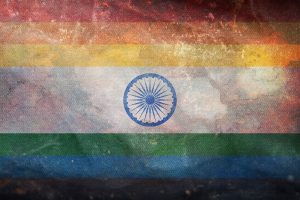It is impossible for a heterosexual person to understand the pain of a couple from the LGBTQ+ community in India. Despite gay sex and gay associations having been decriminalized by the Indian courts in 2018, not only can members of this community not marry, but they are still subjected to intense societal and sometimes even legal harassment.
Recently, a five-judge bench of the Supreme Court of India, the country’s top court, rejected several appeals from the LGBTQ+ community, requesting legal consent to marry. The appeals lost 2-3. To sum to be blunt, the top court of the country has simply passed the buck to Parliament. It is almost cruel for the courts to ask the appellants to go and lobby for their rights with India’s corrupt legislators, who are bound to exact a hefty price if and when they decide they are ready to do this.
While Chief Justice D.Y. Chandrachud and Justice Sanjay Kishan Kaul were amenable to the pleas, Justices S. Ravindra Bhat, Hima Kohli, and P.S. Narasimha disagreed.
The case for LGBTQ+ marriage stumbled before two hurdles. The first was that the right to marry is not a fundamental right in India, which means that there remains “no unqualified right” to marriage with the exception of those that are recognized by law. That means that no judicial deduction can flow from the Constitution of India. Secondly, the constitution has been framed in a way that there are strict restrictions preventing the executive or the legislature or the judiciary from entering each others’ domain. The court, thus, asked the appellants to approach lawmakers, saying law-making isn’t one of the court’s duties.
This may have remained another failed appeal in the annals of India’s juridical history, but it stands out against the backdrop of India’s extraordinary past. If we look back into the history of this country, it’s clear that LGBTQ+ people have always existed. For thousands of years, people we would now consider part of the LGBTQ+ community were comfortably accepted by society, often accorded high positions. Some are even regarded as deities, given places in folklore and songs, in mythologies and religious texts. India should be the last place where this community is marginalized. Instead, India has fallen back on Victorian Puritanism, a legacy of 200 years of British rule.
It was during that rule, in 1860, that the British introduced section 377 in the Indian Penal Code, criminalizing non-heterosexual non-procreative sex, thought to be “against the order of nature.” The British-laid law had provided for sentences up to life imprisonment within section 377. Indians within the LGBTQ+ community were penalized by law enforcement agencies for decades, and it was only in 2018 that this law was struck down by the top court. That was nine years after the Delhi High Court had read down section 377 and decriminalized homosexual acts among consenting adults.
According to Devdutt Pattanaik, a renowned author and historian, we have “…forgotten ancient Indian heritage of recognizing, and accommodating, third gender and queer sexualities, and have submitted to Victorian morality… Now it is time to reclaim our ancient Indian heritage.”
He further explained: “Most religions implement themselves through rules. But not Hinduism. Rules in Hinduism are always restricted to one community (sampradaya) and there are thousands of such sampradayas. There is no pan-Hindu rule.”
His critical argument is that Hinduism has ample scope for the LGBTQ+ community: “In Abrahamic mythology, God is decidedly masculine. In Hindu mythology, God is simultaneously formless, rock, plant, animal, masculine, feminine, and queer. Queer examples include Shiva who becomes a milkmaid (Gopeshwara) to dance in Krishna’s raasleela, Vishnu who becomes a damsel (Mohini) to enchant the gods and demons. There is no ‘one’ way for all.”
Elaborate sculptures of sex, including queer and other forms of intercourse are openly depicted on the walls of ancient Hindu temples, for example, in Khajuraho. These were commissioned by kings and other rulers. That none of them have been defaced, or even touched, shows how tolerant and understanding the Hindu religion can be. All these predate British rule, and its enforced Victorian sensibilities, by hundreds, sometimes thousands, of years.
Great Indian epics also mention ostensibly LGBTQ+ people living within “normal” communities. The “Mahabharata,” for example, tells the story of Shikhandini, who was a feminine or transgender warrior of the time. Shikhandini was a daughter of King Drupada, who raised her as a prince to take revenge from the Kurus, the rulers of Hastinapur. The private life of Shikhandini was not happy, but her acceptance in society (even to her father) was never questioned.
That the Supreme Court’s assurance on the safety of same-sex couples has had no effect was soon evident through lower court observations. The Punjab and Haryana High Court, which looks after two north Indian states, had to recently instruct the state police to provide protection to a lesbian couple. The appeal before the court was because of angry objections from their family members to their relationship.
Indian society today has forgotten its past, its glorious history, its ability to understand and accommodate the many facets of life. While many facets of ancient India, including ancient religious documents are being unearthed and studied, these issues, though right in front of every eye, are not accepted as real.
The LGBTQ+ community has to run another tiresome marathon, just to be able to assure rights they were born with.

































